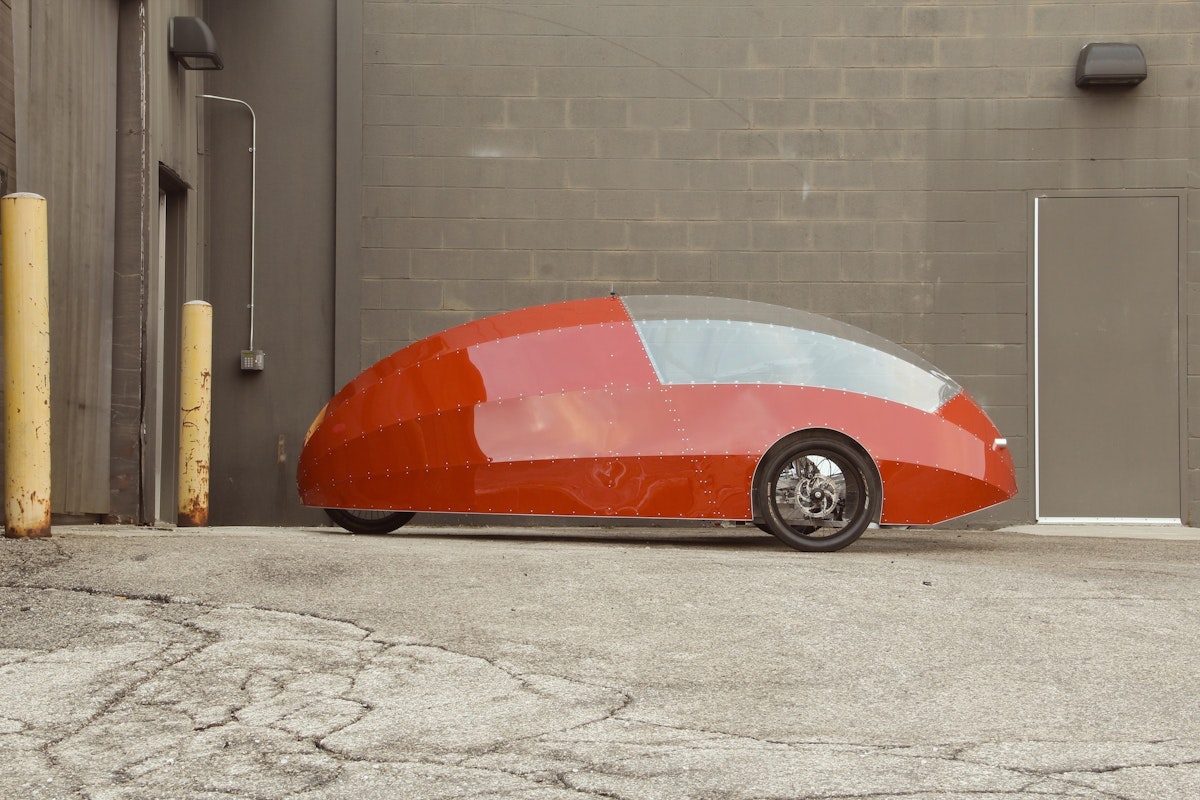Future Cycles at Auto Show
There are many new concept vehicles at this year's North American International Auto Show, but none quite like Stamps MFA candidate Cameron Van Dyke's Future Cycles.
Designed to introduce a new transportation option to American roads, the vehicles combine the weather protection and carrying capacity of a car with the low energy usage of a bicycle to create a “hybrid” vehicle – half car and half bicycle. “These are concept cars in the true sense,” says Van Dyke, “proposing an alternative set of values in relation to transportation. My hope is to get people to imagine new possibilities for the way we travel.”
Van Dyke's The Future People are displaying two exquisitely-made, human-powered vehicles at the Detroit Auto Show - each with a different focus.
The larger of the two, the Cyclone, is pedaled by two riders, with capacity for cargo and an additional two passengers. Constructed using boat building techniques in combination with bicycle technology, it features brushed aluminum details and an interior of fine leather and mahogany. The design references the Model T in a mash-up with what Van Dyke calls “ipod styling”. The result is a retro-futuristic luxury vehicle. “The Cyclone offers an idea for a future vehicle,” Van Dyke explains, “but it also poses questions about the history of automobile culture itself - its values and its priorities.”
The Zeppelin, a smaller, lighter, and more aerodynamic car, is a human electric hybrid vehicle. It is powered by two riders in combination with a 750w electric rear motor, and achieves a cruising speed of 25 mph on flat ground. Constructed of aluminum and polycarbonate, it weighs just 270 lbs., has a 20 mile electric range, and achieves 700 MPG equivalent. The Zeppelin meets the legal definition of a bicycle at the federal level and in many states, making it street-legal with no additional license, registration, or insurance required. “The goal with the Zeppelin was to find an ideal point for which a bicycle and car could coexist within the same object”, states Van Dyke, “to create a truly hybrid design.”

The Future Cycles project began in September 2012, when Cameron Van Dyke enrolled in Stamps to pursue his MFA. After operating his own furniture design/build studio for over 16 years, Van Dyke wanted to shift his design practice to something that was more focused on exploring alternative value systems related to housing and transportation.
Through one of his early classes in transportation and public policy, he recognized that future solutions to the inevitable decline of oil will need to address the massive infrastructure of our current transportation system. He began to experiment with the idea of making a lightweight car that was human powered. His first attempt, the Firefly, received international attention for its unique, illuminated and weather protecting translucent shell.
The two cars displayed at the 2015 Auto Show represent a deeper exploration into the prospects of human powered transportation.
Future Cycles will be on display at the Detroit Auto Show through Jan 25th, 2015.